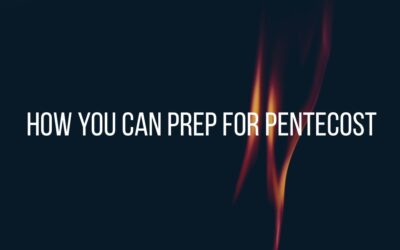My Aversion to Self-Help Books & Their Gurus but Why I Recommend This One!
I am not one for “self-help” books. I know that I probably could use some more personal coaching advice, but… my habit of going on my own is hard to break. That is why James Clear’s 2021 bestseller, Atomic Habits: An Easy & Proven Way to Build Good Habits & Break Bad Ones was a surprisingly refreshing read for an anti-self-help curmudgeon like me.
The older I get, the more I realize the choices that I have made, my habitual practices, have shaped me for good and for ill. Is it too late to change? Can I still improve? How can I get out of certain habitual ruts that keep me at the same weight physically, relationally, emotionally, and spiritually? Atomic Habits provides a few insights into our state of “stuckness” and offers a hopeful and practical plan to move beyond where we are to where we want to be.
Wait a Second, Why Read and Review a Book Like This in the First Place?
Ok, so before I review the book, you might be asking,
Why read this? Doesn’t the Bible teach us everything we need to know about flourishing and thriving, about becoming productive people with good and purposeful habits? Can’t we just read the book of Proverbs and take that as our marching order?
We can and we should, but there is helpful truth and advice in the world around us, even some, contrary to my personal aversion, in the self-help section of the bookstore. There are also certainly more than a few of our congregants who are reading James Clear for advice on habit formation, folks who sincerely desire to find a better way, to break free from behaviors that more likely have set them up for failure rather than success. We can read along with them, learn together, and also test the wisdom of popular psychology and science against that of the scripture. We can see where they converge and diverge from one another.

The Pastor’s Workshop has an absolute commitment to the written word of God that reveals the living Word of God, but we also have a responsibility to read outside the boundaries of “the 66” and explore the larger world of ideas. Secular books are also written by people infused with the image of the Creator, however marred we all may be, and we should test and try their ideas against God’s revelation. This is why we review not only books on theology and practical ministry, but we review popular literature, movies, television, games, and other life-shaping material. It helps inform us as preachers and teachers to speak with greater relevance and reflection to our communities who are often reading and imbibing much more than the book of Job or the Gospel of John.
So, while Clear’s book does not explicitly touch on the numinous or divine, the metaphysical or transcendent, it does ask sincere questions about the search for purpose and meaning in habits that both form and reveal our identity and for that reason alone it is worth engaging. Whether or not one decides to utilize his tools for change, I think this book will help you think more thoughtfully about the relationship between habits and identity, practices and purpose.
Clear’s Conventional Wisdom Backed by Psychology, Biology, and Neuroscience
Clear highlights a good deal of traditional wisdom on habit formation confirmed by psychology, neuroscience, and biology⸺the power of incremental change, identity shapes behavior, bad systems equal bad habits, just to name a few. The book’s conclusion sums up the heart of his message, “Small habits don’t add up. They compound. That’s the power of atomic habits. Tiny changes. Remarkable results” (Clear, 253). He defines atomic change as, “…a marginal gain, a 1 percent improvement” (Clear, 27). Such marginal changes matter: “The holy grail of habit change is not a single 1 percent improvement, but a thousand of them. It’s a bunch of atomic habits stacking up, each one fundamental unit of the overall system” (Clear, 251).
Habit Formation is a Neutral Four-Step Process
Clear describes habit formation as a four-step process: 1) cue, 2) craving, 3) response, and 4) reward. Those steps create what he calls a neurological feedback loop that spins us around on the merry-go-round of habit. The cue triggers our brain to move toward action which moves us towards the fulfillment of both basic needs for survival and the more existential desire for meaning. Those cues create a craving. The response is the actual habit that satisfies the craving, and the reward is the benefit it provides us. Such a feedback loop is neutral in that it can form both good and bad habits.
Let me explain. Cue: I hear about this artist from Virginia whose song is number one on the charts and his music is being politicized. Craving: The cue triggers my desire to be “in the know” with the rest of the crowd, so I set aside the tasks at hand. (Thanks to neuroscience, we know that anticipatory dopamine is released.) Response: I open up YouTube and spend the next twenty minutes listening to his song, interviews, reactions, and other news related to this artist’s creation. Reward: I’m in the know: educated on pop culture with the rest of you. Now, that newly formed habit may be neutral or it could be detrimental, if it takes over my daily tasks or produces unwanted consequences in the future. There is indeed a degree of consequential difference between the hit of an opioid and a YouTube splurge, yet they are both motivated by the same human impulse to provide relief and fulfillment.
A Four-Step Process Divided into Two Phases and Clear’s “Four Laws of Behavioral Change”
Clear takes this four-step process of habit formation and breaks it into two phases, the problem phase and the solution phase. Cues and craving form the problem phase, and responses and rewards the solution phase. Since the feed-back loop is neutral, he introduces his “Four Laws of Behavioral Change:

How to Create a Good Habit and How to Break a Bad Habit” utilizing the four-fold steps. Good Habit: First Law (Cue): Make it Obvious, Second Law (Craving): Make it Attractive, Third Law (Response): Make it Easy, and Fourth Law (Reward): Make it Satisfying. To break a bad habit he simply inverses the creation of good habits so that the cue is not obvious, the craving is unattractive, the response is difficult, and the reward is unsatisfying.
My Take-Aways from What I Describe as Clear’s 5 “Rs” of Habit Formation
Results and Systems: Clear believes that most people focus on results to their loss, “You should be far more concerned with your current trajectory than with your current results” (Clear, 17). The process or system level is where he believes we will find lasting change, “When you solve problems only at the results level, you only solve them temporarily. In order to improve for good, you need to solve problems at the systems level. Fix the inputs and outputs will fix themselves” (Clear, 25). He likens the building of good habits to the cultivation of a delicate flower that is achieved “one day at a time” (Clear, 21).
Relationship & Environment: Our parents may have been on to something when they warned us about the company we keep. According to Clear, relationships and environment are significant contributors to the formation of good habits: “Environment is the invisible hand that shapes human behavior” (Clear, 82). He suggests that one of the most effective things we can do to foster better habits is, “to join a culture where 1) your desired behavior is the normal behavior and 2) you already have something in common with the group” (Clear, 122).
Refocus Priorities: Many of us have unfulfilled aspirations. The life we desire is incongruent with the life that we live. We aspire to toned muscles and the memorization of scripture but we lift the remote and binge the newest Netflix offering. Clear says, “the most practical way to change who you are is to change what you do” (Clear, 38). He also adds that, “behind every system of actions is a system of beliefs” (Clear, 32). That should mean that our belief system should inform our actions and our actions can indeed transform us. If you believe that running is good for you, you have to get off the couch and begin to run. What seems obvious needs to be made more obvious.
But our priorities may need some tweaking. We need a focus on something more grand than the measurement and means. Clear says,
We focus on working long hours instead of getting meaningful work done. We care more about getting ten thousand steps than we do about being healthy. We teach for standardized tests instead of emphasizing learning, curiosity, and critical thinking. In short, we optimize for what we measure. When we choose the wrong measurement, we get the wrong behavior…when a measure becomes a target, it ceases to be a good measure. (Clear, 202-203)

Repeat What Is Boring: The idea of the long obedience in the same direction is what Clear gets at when he says, “The only way to become excellent is to be endlessly fascinated by doing the same thing over and over. You have to fall in love with boredom” (Clear, 236). All of us are wired to desire something new and exciting, but if we want to succeed in something we need a high tolerance for delayed gratification.
Reflection & Review: Self-examination is crucial if we not only want to create good habits but also shun the bad ones, “Without reflection, we can make excuses, create rationalizations, and lie to ourselves…top performers in all fields engage in various types of reflection and review” (Clear, 244).
A Closing Comment
There are quite a few parallels to the practical wisdom of scripture in Clear’s creed on habit formation. The wisdom literature of the Bible speaks of relationships and environment beginning with Psalm 1. The company you keep, whose “path you walk in” matters. A tree planted by streams of living water provides an environment for growth and thriving that won’t be found in an arid environment. 1 Corinthians shows us that the Corinthian church’s focus on the “cool” things that made them (and us) feel special missed the priority of love and its characteristics. It speaks to the need to reprioritize our focus. The list could go on, but that is your job.
Read the book. Take notes. Make comparisons. Contrast Clear’s ideas with scripture’s wisdom. Take and use what resonates and leave behind what doesn’t and remember that God is indeed the God of all truth even when it comes without a canon.

Scott Bullock is a Board Member and Contributor with The Pastors Workshop. He is an ordained Presbyterian minister who has served churches in Illinois, New Jersey, and California. He holds an MA in New Testament Studies from Wheaton College, an MDiv from Fuller Theological Seminary, and a ThM in New Testament from Princeton Theological Seminary. Scott is married with three teen-aged children.
Don’t Miss
The Latest From Our Blog
New Site Launches Tomorrow!
Watch this Space! Tomorrow (May 29) is the official launch of the new The Pastor's Workshop site! Return to this blog tomorrow morning for a post highlighting the new features and explaining how subscribers can get on and start using the site! Here are some new...
How You Can Prep for Pentecost
This was originally posted on May 12, 2016 on https://huffpost.com Pentecost Came Like Wildfire I'm lying on an ice pack early this morning, doing my back exercises and listening to Pray as You Go, a tool for meditation, with monastery bells, music, and a Bible...
Sacred Spaces: the Church Forests of Ethiopia
Let's Go to Ethiopia! Here’s a fun exercise with a spiritual payoff. Go to Google Maps and view aerial images of the South Gondar zone of Ethiopia. Use this button:When the page loads, you'll see a light brown countryside, mostly farmland. There are thin lines of dark...




